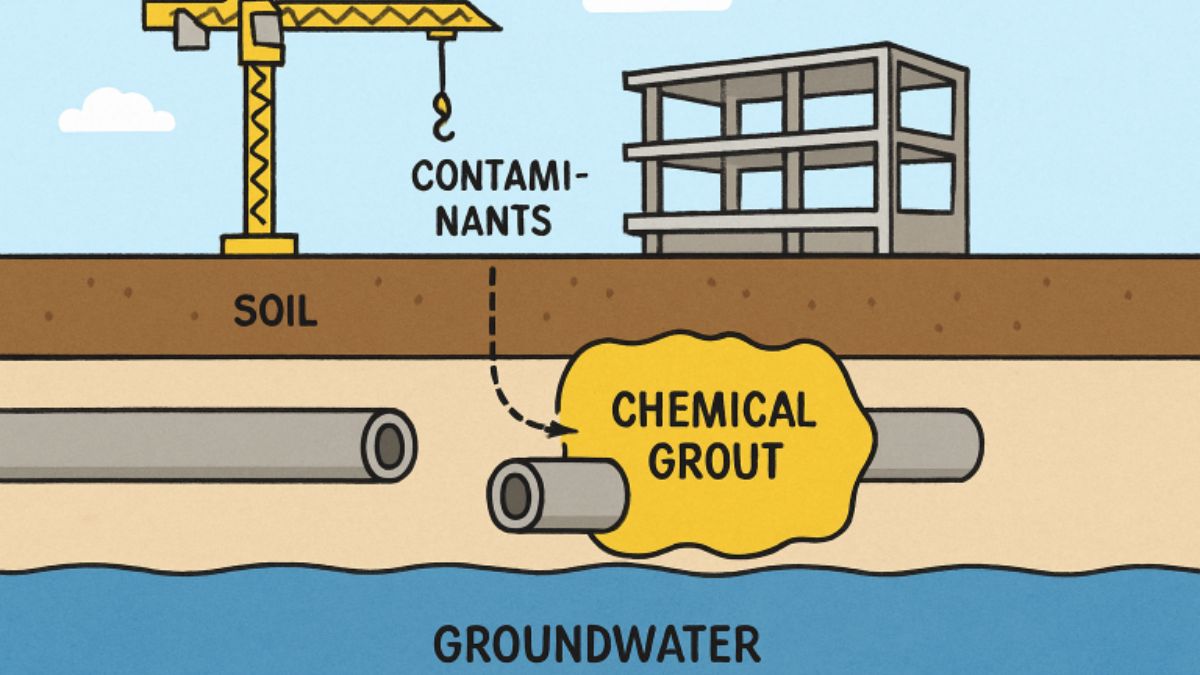HOME
Smooth Sailing into Homeownership: How to Get Pre-Approved with Ease

Acquiring pre-approval for a mortgage is a crucial step in the journey to homeownership. It can significantly bolster your bargaining power and signal sellers that you’re serious. This process might seem daunting, but it can be a breeze with the proper knowledge. Whether exploring options with Toledo OH real estate experts The Real T Group or preparing to dive into the housing market elsewhere, understanding pre-approval can be a game-changer. By taking the time to understand this aspect of home buying, you’ll find yourself better equipped to handle negotiations and make informed decisions on the complex road to homeownership.
By examining credit scores, assessing financial health, and adequately preparing necessary documentation, you quickly navigate the often-complicated waters of mortgage approval. The crucial role of lenders in this process and strategic financial moves can enhance your pre-approval odds, making the dream of homeownership a reality sooner rather than later. Understanding each part of this intricate process can demystify what many perceive as a daunting experience.
Introduction to Pre-Approval
The dream of owning a home is universal, transcending borders and personal backgrounds. However, amidst excitement and vision boards lies the practical reality of mortgage pre-approval. It’s a letter from a lender that confirms you’re qualified to borrow up to a particular amount, which adds credibility to your purchase offer. This document outlines the maximum loan amount the lender offers based on your financial picture. Learning the ins and outs can turn potential stress into a structured, straightforward action plan. It’s not merely an administrative step; being pre-approved places you ahead in the competitive housing market, allowing you to act fast when you find the perfect home.
Why Pre-Approval Matters
Buyers who have pre-approval stand out in the real estate market. Sellers are more inclined to negotiate when they know a lender already backs you up to a specific amount, which may give you a competitive edge during negotiations. Not only does this provide peace of mind, but it sets a concrete financial limit, helping you avoid the disappointment of falling in love with a home that lies outside your budget. Streamlining the closing process means you can move into your dream home faster. Understanding the value of pre-approval is key to making informed and confident decisions during the home-buying process. Learn more about the home selling process through trusted real estate advice to understand its importance from buyer and seller perspectives.
Know Your Credit Score
Your credit score gives lenders a brief overview of your borrowing history and fiscal accountability. Requesting a credit report is vital, as it allows you to address discrepancies or debts beforehand. This awareness ensures you’re putting your financial best foot forward when seeking mortgage pre-approval. Enhancing your score can improve your chances of securing pre-approval and lower the interest rates offered, saving you money in the long run.
Financial Health Check-Up
Before diving into the pre-approval process, conducting a financial health check-up can prevent future headaches. Evaluating your income against monthly expenditures and debts will help you realistically determine what you can afford. An honest assessment of your financial situation is imperative to avoid stretching your budget too thin once you’re responsible for a mortgage and additional homeownership costs. Resources can provide comprehensive strategies to optimize your fiscal planning and prepare for this substantial investment, aligning your goals with affordability. Budgeting for other homeownership expenses—such as insurance, repairs, and property taxes—is essential to this evaluation.
Gathering Essential Documentation
Organization is crucial. Lenders require a clear picture of your financial status, often demanding documents like pay stubs, tax returns, and bank statements. Having these at your fingertips expedites the pre-approval process and enhances your credibility as a buyer, smoothing interactions with real estate officials and lenders alike. A well-organized and transparent financial picture can also help foster trust and reliability with potential lenders. Thoughtfully preparing these documents allows the lender to quickly and easily assess your ability to repay the loan, making the approval process more efficient.
The Role of Lenders in Pre-Approval
Not all lenders are created equal; each comes with criteria and conditions. As you compare offers, consider the terms that fit short- and long-term financial aspirations. Lenders use various methods to evaluate risk, so it’s wise to shop around to find the most favorable conditions for your situation. Securing a favorable interest rate or more flexible repayment terms can influence your financial commitment over the life of the loan. Understanding each lender’s requirements and benefits and their impact on your mortgage terms will empower you to make the best decision for your financial future.
Enhancing Your Pre-Approval Odds
Improving your odds for pre-approval might involve increasing your credit score, reducing financial liabilities, or boosting savings. Actions such as paying down existing debts and avoiding new credit inquiries can give lenders a more substantial financial profile. Engaging with financial advisors or mortgage brokers can lend expertise and negotiability to your favor, offering personalized advice typically unavailable through broader, conventional channels.
Conclusion: Stepping Confidently into Homeownership
Pre-approval is more than an administrative step; it signals readiness and a strategic advantage. The path to homeownership becomes smoother with careful preparation, including enhancing your fiscal history and engaging proactively with lenders. A clear understanding of what pre-approval entails and the diligence in preparing for it can remove much of the home-buying journey’s uncertainty. Armed with knowledge, you can step confidently into one of the most significant purchases of your life, knowing you’ve laid a solid foundation through diligent pre-approval practices. The preparedness and assurance provided by pre-approval allow for a seamless transition into homeownership, poising you for future success.
HOME
Fresh Approaches to Simplifying the Home Buying Process

Common Myths That Complicate Buying a Home
Many prospective buyers hesitate to start their homeownership journey due to persistent myths that cloud the process. For instance, the belief that you need a perfect credit score or a massive down payment often discourages people from even considering buying a home. In reality, various financial assistance programs and loan options exist to help buyers from all backgrounds. Overcoming these misconceptions is essential, and working alongside a trusted real estate agent Lake Forest, CA can clarify these and guide potential buyers confidently through the process. By debunking these myths early, buyers can make informed decisions, take advantage of available resources, and move toward homeownership with greater confidence and clarity.
Preparation Tips for a Smoother Journey
Preparation is the bedrock of a stress-free home-buying experience. Before diving into the real estate market, distinguish between the features your new home must have and those that would be nice bonuses. This clarity helps streamline decision-making and minimizes distractions during your search. Experts also recommend:
- Monitoring your credit well ahead of time and implementing improvements if needed
- Collecting necessary documentation, such as proof of income and assets
- Exploring neighborhoods broadly to increase the likelihood of finding a home that ticks most of your boxes
Understanding Financial Basics Before You Buy
Financial clarity is critical before setting foot in any open house. Knowing how much you can reasonably afford will prevent disappointment and wasted time on unaffordable homes. This includes carefully calculating how much you can put down, understanding additional costs like taxes and maintenance, and factoring in insurance. Consulting with a mortgage advisor is highly recommended—this professional can explain mortgage types, interest rates, and potential monthly payments. According to the Consumer Financial Protection Bureau, buyers who plan budgets and seek guidance tend to have smoother transactions and greater long-term satisfaction.
Streamlining Your Property Search
Online listings make the property search faster, but can quickly become overwhelming without a targeted approach. Set clear filters for price, location, square footage, and must-have amenities. Many real estate platforms allow notifications when homes matching your criteria become available, enabling you to act quickly. Virtual tours are another powerful tool, letting buyers narrow down options from the comfort of their current home, which is especially helpful for those relocating or with busy schedules.
What to Expect During Home Inspections
Home inspections are pivotal, giving buyers peace of mind about their investment. A licensed inspector will examine the property for hidden damage, such as foundation cracks, plumbing leaks, or electrical issues. Attending the inspection allows buyers to ask questions, see problem areas firsthand, and gauge whether repairs will affect their decision to proceed or renegotiate with the seller. This transparency ensures buyers know exactly what they’re purchasing—reducing surprises and regrets after closing.
Key Steps for Confident Negotiations
Negotiation extends beyond simply settling on a sale price. Savvy buyers work with their agents to request seller concessions, such as assistance with closing costs or leaving behind appliances, which can offer considerable savings. The negotiation process often involves offers, counteroffers, and sometimes waiting for third-party approvals. Stay patient and focus on your biggest priorities—occasionally conceding on small points to achieve your most important objectives. Maintaining open communication with your agent helps you stay aligned, while keeping a level head will prevent emotionally charged decisions.
Final Steps Before Moving In
As your closing date approaches, schedule a final walk-through to ensure that agreed-upon repairs have been completed and no new issues have surfaced. This step allows you to verify that the property matches the contract terms. Begin organizing your move several weeks in advance by securing movers, arranging for utilities to be turned on, and collecting change-of-address forms. Updating your address with your bank, employer, and service providers is crucial to ensure uninterrupted communication and avoid misdirected bills or important documents.
HOME
The Art and Science of Achieving Natural-Looking Lip Filler Results

The Rising Trend of Lip Fillers
Lip fillers are a popular cosmetic enhancement, with millions seeking them annually. The desire for plumper, smoother, and more harmonious lips has driven interest across all age groups and genders. As options and expertise expand, many now prioritize subtle results. Customized lip filler treatments in Salt Lake City allow clients to tailor their results to suit their individual features and goals. The growth in minimally invasive aesthetics is rooted in confidence, self-expression, and facial balance. Advancements in filler technology provide safe experiences and refined results for clients.
Why the Goal Has Shifted to Natural Results
The trend of natural lip enhancements is gaining popularity, with fillers optimizing existing features rather than exaggerating them. This shift is part of a broader cultural movement towards authenticity and refined aesthetics, where “less is more” is emphasized. Surveys and patient feedback show that the happiest clients have their improvements go unnoticed, allowing personal confidence to shine without drawing attention. This trend is influenced by increased public knowledge and education about aesthetics, allowing individuals to ask informed questions and maintain routines that respect their individuality.
Choosing a Skilled Provider Matters
Selecting the right injector is crucial for safe and natural-looking lip augmentation. Seek providers with a strong clinical background, positive client feedback, and portfolios of well-executed enhancements. Avoid uncredentialed practitioners or bargain deals, as expertise is crucial for safety and outcomes. Facial anatomy understanding is also essential for optimal results and patient safety, as per the American Academy of Dermatology Association.
Types of Fillers: Which One Is Right For You?
Modern lip fillers are based on hyaluronic acid, a naturally occurring substance that hydrates and supports plumpness. They come in lightweight and denser formulations, with some offering a temporary boost and others lasting up to a year. The ideal product depends on factors like skin type, age, and lifestyle. A consultation with a provider helps select the best formula to align with your expectations, preferences, and anatomy.
Preparation Steps Before Your Appointment
Proper preparation lays the groundwork for smooth, successful lip filler appointments. In the days leading up to your session:
- If your provider advises, avoid blood-thinning medications and supplements such as aspirin, ibuprofen, and fish oil to reduce the risk of bruising.
- Maintain good hydration and have a light meal before your appointment to prevent feeling faint or lightheaded.
- Arrive without any makeup on your lips and surrounding areas.
- Share a complete medical history with your practitioner and candidly discuss your cosmetic goals.
These steps help create a foundation for comfort and optimal results, as well as minimize potential complications.
What to Expect During the Procedure
Modern lip fillers are administered in a short visit lasting less than an hour, with numbing agents applied for comfort. The filler is then incrementally injected into targeted areas using ultra-fine needles or cannulas. Clients may experience mild pressure or pinching, but pain is minimal. Some swelling, redness, or minor bruising may occur, but normal activities can resume the same day. Downtime is brief, and most side effects subside within days.
Essential Aftercare Tips for Smooth Recovery
After a lip surgery, it’s crucial to follow specific aftercare steps to maintain natural-looking lips. These include applying cold compresses to control swelling, avoiding touching or massaging the lips, avoiding strenuous exercise and alcohol, and sleeping with the head slightly elevated. Regular monitoring for unusual pain, lumps, or swelling is also essential. Following your provider’s personalized aftercare advice is crucial for a seamless, natural look.
Future Trends and Innovations in Lip Fillers
The field of injectable aesthetics is ever-evolving, with newer products offering increased longevity, smoother consistency, and less swelling. Techniques like “microdosing” use smaller amounts of filler for even subtler tweaks, catering to the most discerning clients. Ongoing research aims to minimize downtime and enhance safety further, promising even more personalized results in the future. Staying informed with updates from reputable sources and professional dermatological organizations helps consumers make the safest, most empowering choices for their own aesthetic journeys.
HOME
Reducing Contamination Risks: The Benefits of Chemical Grouting in Infrastructure Projects

Understanding Chemical Grouting
Chemical grouting is a specialized technique used to control groundwater, stabilize loose soils, and support infrastructure with minimal disruption. It involves injecting chemical solutions, such as sodium silicate or polyurethane, into subsurface materials to form durable, impermeable barriers. This method enables targeted treatment without the need for extensive excavation. In areas where construction demands precision and minimal surface impact, permeation grouting Houston projects demonstrates how localized application enhances effectiveness. Engineers tailor the grout types and strategies to suit different soil conditions, making it an adaptable solution in urban, geologically complex, or environmentally sensitive areas. This approach not only improves structural integrity but also extends the lifespan of critical infrastructure. As demand for resilient and sustainable construction increases, chemical grouting remains a vital component in modern engineering practices.
Minimizing Environmental Contamination
Chemical grouting helps prevent the spread of contaminants, particularly in polluted or water-sensitive areas, by creating underground barriers known as grouted curtains. These barriers are particularly effective around pipelines, landfills, and industrial zones, reducing the risk of contaminant migration without requiring surface disruption. In municipal sewer systems, grouting seals leaks, limits groundwater intrusion, and protects public health while minimizing ecological and regulatory concerns. According to AZoBuild, advancements in grouting technology continue to enhance the efficiency and reliability of these applications, making them a vital tool in modern environmental engineering.
Enhancing Structural Integrity
Chemical grouting significantly strengthens civil infrastructure by transforming loose or unstable soils into dense, load-bearing materials. This stabilization is crucial in areas with high traffic, groundwater variability, or seismic risks, thereby reducing threats such as soil liquefaction and uneven settlement. By creating a rigid, uniform ground mass, grouting extends the life and reliability of structures such as bridges, tunnels, and foundations.
Technological Advances in Grouting
Modern chemical grouting benefits from real-time data analytics and automated systems that improve accuracy and efficiency. AI-driven tools analyze soil conditions in real-time, enabling precise adjustments in grout delivery and composition. This not only enhances safety and performance but also boosts success rates for large-scale stabilization efforts.
Cost-Effective Solution
Chemical grouting offers a cost-efficient alternative to traditional soil stabilization methods. It minimizes construction delays, avoids major excavation, and reduces the need for utility relocation. Over time, the durability it provides cuts maintenance costs and lowers the risk of water damage or emergency repairs, making it a wise long-term investment. As highlighted in WaterWorld, engineers are increasingly using chemical grout to stretch rehabilitation budgets, demonstrating its economic value in both short-term fixes and long-term infrastructure planning.
Environmental Considerations
Sustainability is becoming an increasingly important priority in chemical grouting. Eco-friendly grout formulations, including those from recycled materials, reduce emissions and environmental impact. Projects near sensitive ecosystems benefit from biodegradable options, helping align grouting practices with ESG goals and ecological preservation.
Best Practices for Sustainable Grouting
Responsible grouting involves conducting precise site analysis, utilizing renewable or biodegradable materials, and post-application monitoring to detect any potential adverse environmental effects. Ongoing collaboration with regulators ensures compliance and fosters public trust, especially in sensitive or high-profile projects.
Conclusion
Chemical grouting remains a vital tool in civil engineering, providing structural, economic, and environmental benefits. With advancing technology and a growing focus on sustainability, it presents a resilient and responsible solution for today’s and tomorrow’s infrastructure needs.
-

 BLOG1 year ago
BLOG1 year agoElizabeth Huberdeau: Women Behind The WWE Superstar
-

 NEWS1 year ago
NEWS1 year agoMisty_moless_2: A Rising Star in the Digital World
-

 GAMES1 year ago
GAMES1 year agoWest vs East Match Player Stats
-

 BLOG1 year ago
BLOG1 year agoite:mommyandlove.com/baby-names/: Discover Unique and Meaningful Baby Names
-

 BLOG1 year ago
BLOG1 year ago3d659.com blog: A Resourceful Hub for Information
-

 BLOG1 year ago
BLOG1 year agoP72 National Pitch Competition: Nurturing the Entrepreneurs of Tomorrow
-

 EDUCATION12 months ago
EDUCATION12 months ago7 Top Arts Educational Schools in London Every Student Should Know About
-

 TECHNOLOGY1 year ago
TECHNOLOGY1 year agoNpoint S/N 135064: Understanding Its Significance & Applications
